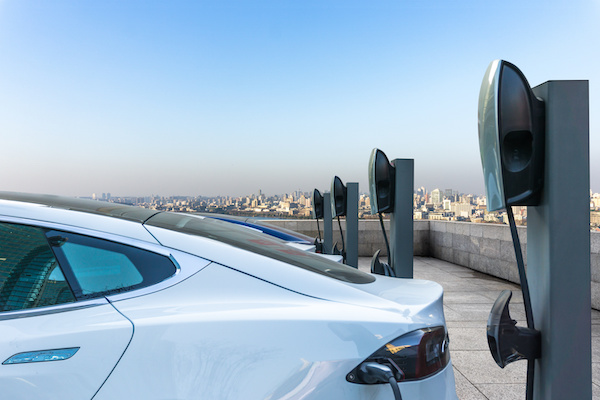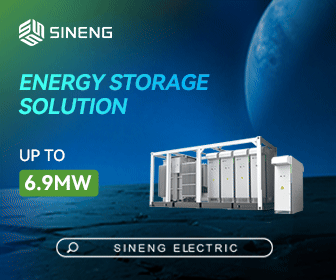Driving the US EV Revolution
As the transportation sector continues to be a leading emitter of greenhouse emissions, the adoption of electric vehicles (EVs) is expected to play a critical role in reaching the goal of net zero by 2050.
A recent industry report forecast that 50 percent of all new vehicle sales will be EVs by 2030 in the United States. Additionally, the US vehicle market hit 5 percent of new vehicle sales of EVs in 2022, which is a pivotal point in demonstrating mass adoption. One major barrier to EV uptake in most regions, however, is the fact that there are currently too few charging stations within range of destinations such as public areas, work, or home. A significant increase in EV use cannot be achieved without both the average vehicle range leaping higher, and increasing charging station density of both public and private sites.

Funding the EV transformation
In one of the most momentous steps in the electrification of the transportation industry, the Biden-Harris administration recently pledged to build a national network of 500,000 EV chargers along highways and in communities by 2030. This was followed by the announcement that Congress had approved Electric Vehicle Infrastructure Deployment Plans for all 50 States, the District of Columbia, and Puerto Rico — ahead of schedule — under the National Electric Vehicle Infrastructure (NEVI) Formula Program, in a bid to advance to a more publicly accessible EV network.
This ambitious program marks a crucial transition point, with the federal government laying the groundwork to ultimately allow critical work relating to EV infrastructure to take place. The approval has created USD$5 billion of NEVI program funding, available from FY22 and FY26, to support the delivery of a reliable, convenient, and affordable network of public EV fast chargers for Americans. NEVI funding can be used for projects directly relating to the charging of a vehicle, including upgrading existing infrastructure, operation and maintenance costs of charging stations, on-site generation and storage, and workforce development activities. To compliment the NEVI funding, the federal government has allocated $2.5 billion through the Discretionary Grants program to help fill in gaps of infrastructure along corridors and communities throughout the United States.
While these funding mechanisms are critical elements in reducing emissions in the United States, and supporting the growing market of EVs, there remain several additional factors to consider in evaluating how to capitalize on, and ensure the EV revolution achieves the economic, environmental, and equity goals towards which the country strives.
Assessing the market
 Utilities play a critical role in driving EV adoption in the United States. For example,
Utilities play a critical role in driving EV adoption in the United States. For example,
leveraging the batteries inside EVs can assist in load management, load dispatchability, and energy resiliency for the grid and utility customers.
Industry professionals have collaborated with various utilities to evaluate the success of programming and a data-driven approach to deploying investment and education to both residential and commercial non-residential sectors. This includes assessing program progress, as well as analyzing station utilization trends and evaluating a discount rate pilot for direct current fast charging station hosts. Utilities can also work with regulators to share customer insights from EV adoption, providing access to EV charging data to identify when and where charging is happening. This insight can shape further opportunities for utilities to access rate-based transportation electrification funding, and target the areas of greatest need.
It is also critical to ensure the EV evolution is planned strategically and equitably so no communities are left behind. The US administration’s Justice 40 initiative will support this effort, with a promise that at least 40 percent of federal climate investments go directly to frontline communities most affected by poverty and pollution.
EVs are generally priced higher than their combustion counterparts, which is a contributing factor to why many Americans have not made the switch (despite lower running costs and available incentives). By ensuring an equitable and publicly accessible EV charging infrastructure network, and encouraging private ownership, the market will be free to mature to where it can create scale advantages for original equipment manufacturers to reduce upfront costs.
The recent funding, coupled with the real desire to achieve a net zero future, means the next five to 10 years will offer significant opportunities for the United States’ EV market. However, this will require the public and private sectors to collaborate closely to learn, grow, and advance the sector into one that drives transformational change.
J.R. Killigrew is Business Development Lead for Electric Vehicles at DNV. DNV supports industry and clients to take advantage of the value stream and opportunities within the EV revolution.
DNV | www.dnv.com
Author: J.R. Killigrew
Volume: 2023 January/February









